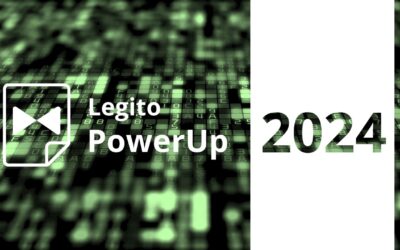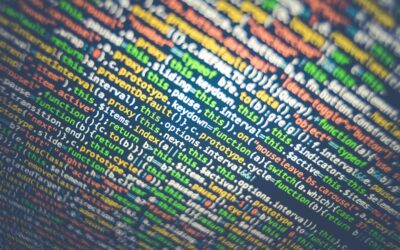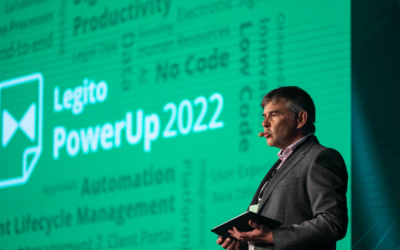Mark A. Cohen: Legal Pioneer And Disruptor
He is CEO of Legal Mosaic, The Executive Chairman of the Digital Legal Exchange, and Catalyst-in-Residence of the Singapore Academy of Law. His regular Forbes column and global speaking, teaching, and pioneering efforts in co-founding Clearspire are well-known globally. With his vast experience and legal activism, Mark is a highly regarded legal mind whose intelligent views on digital transformation, new legal models, regulation, access to justice, legal education/training, and online courts are inspiring real change across the industry.
He is CEO of Legal Mosaic, The Executive Chairman of the Digital Legal Exchange, and Catalyst-in-Residence of the Singapore Academy of Law. His regular Forbes column and global speaking, teaching, and pioneering efforts in co-founding Clearspire are well-known globally. With his vast experience and legal activism, Mark is a highly regarded legal mind whose intelligent views on digital transformation, new legal models, regulation, access to justice, legal education/training, and online courts are inspiring real change across the industry.
How would you describe the current state of affairs in the legal profession as regards to leveraging technology?
It is early days, especially compared to business. Covid-19 will accelerate more widespread application of and investment in technology that will impact legal education/training, delivery, and dispute resolution.
How would you describe Digital Transformation? How is the Digital Legal Exchange unique in helping transform the legal landscape?
Digital transformation begins with data and the customer. It is a process that describes different ways of doing things that benefit consumers and the customer experience. Technology is an enabler; it is not the soul source of digital transformation.
The Digital Legal Exchange is a learning/training center, research repository, and data center for digital transformation of the legal industry. It is also a community of large corporations, faculty, and other legal, business, technological, and governmental thought leaders committed to reimagining the art of the possible for the legal function. That means, among other things, exacting more from the legal function– proactively serving as corporate defenders and collaborators with business to drive enterprise value.
What methods have you used, and do you recommend for helping to bridge the gap between learning institutions and the professional marketplace?
The divide between law schools—especially in the US—and the marketplace is broader than other professional schools and professions. Medicine is an example. There are many ways to address this: different hiring criteria for faculty as well as students; more accountability for faculty/law schools—especially with student outcomes; and law schools morphing from diploma mills to learning centers for life. I could write a book on the topic and probably will at some point. The good news: law schools are feeling financial pressure, and that’s what usually galvanizes change.
Could you tell us a bit about the Post Cubist Paradigm?
It is an early twentieth century period of art when cubists became freer with their form. I used that at a speech I gave in 2012 at “Reinvent Law.” My point was that the legal ecosystem—then beginning transformation in earnest—showed signs of going beyond cubism. It was more open to experimentation and new models. I recall using Picasso’s “Three Musicians” that challenged viewers to “put the pieces together.” That’s why I later came up with the name “Legal Mosaic” for what I do.
Tell us about your experiences with Clearspire and Qualitas, and they impacted you, and your current viewpoint and perception of how LegalTech can truly disrupt the status quo.
I did write a (short) book chronicling my Clearspire experience. It’s called “The Clearspire Story” and you can Google it.
In a couple days, you will be leading the Financial Times’ Digital Lawyers, could you tell us about goals of that project?
The principal goal is to raise awareness and to explore the imperative that the legal profession and industry must embrace digital transformation.
What types of legal work do you think LegalTech is good for supplementing, and what are others that you think should be approached carefully – if at all with innovative technological solutions.
Legal tech is relevant when it can do something more quickly, efficiently, and/or cost effectively than humans alone can. Those tasks must be material to driving client value. Legal tech is like evidence—it is not inherently relevant; it must relate to something that is essential either to a case or, with tech, enhancing human performance and driving customer value. If it’s user-friendly, that’s a big help.
Thank you very much, Mark!
How would you describe the current state of affairs in the legal profession as regards to leveraging technology?
It is early days, especially compared to business. Covid-19 will accelerate more widespread application of and investment in technology that will impact legal education/training, delivery, and dispute resolution.
How would you describe Digital Transformation? How is the Digital Legal Exchange unique in helping transform the legal landscape?
Digital transformation begins with data and the customer. It is a process that describes different ways of doing things that benefit consumers and the customer experience. Technology is an enabler; it is not the soul source of digital transformation.
The Digital Legal Exchange is a learning/training center, research repository, and data center for digital transformation of the legal industry. It is also a community of large corporations, faculty, and other legal, business, technological, and governmental thought leaders committed to reimagining the art of the possible for the legal function. That means, among other things, exacting more from the legal function– proactively serving as corporate defenders and collaborators with business to drive enterprise value.
What methods have you used, and do you recommend for helping to bridge the gap between learning institutions and the professional marketplace?
The divide between law schools—especially in the US—and the marketplace is broader than other professional schools and professions. Medicine is an example. There are many ways to address this: different hiring criteria for faculty as well as students; more accountability for faculty/law schools—especially with student outcomes; and law schools morphing from diploma mills to learning centers for life. I could write a book on the topic and probably will at some point. The good news: law schools are feeling financial pressure, and that’s what usually galvanizes change.
Could you tell us a bit about the Post Cubist Paradigm?
It is an early twentieth century period of art when cubists became freer with their form. I used that at a speech I gave in 2012 at “Reinvent Law.” My point was that the legal ecosystem—then beginning transformation in earnest—showed signs of going beyond cubism. It was more open to experimentation and new models. I recall using Picasso’s “Three Musicians” that challenged viewers to “put the pieces together.” That’s why I later came up with the name “Legal Mosaic” for what I do.
Tell us about your experiences with Clearspire and Qualitas, and they impacted you, and your current viewpoint and perception of how LegalTech can truly disrupt the status quo.
I did write a (short) book chronicling my Clearspire experience. It’s called “The Clearspire Story” and you can Google it.
In a couple days, you will be leading the Financial Times’ Digital Lawyers, could you tell us about goals of that project?
The principal goal is to raise awareness and to explore the imperative that the legal profession and industry must embrace digital transformation.
What types of legal work do you think LegalTech is good for supplementing, and what are others that you think should be approached carefully – if at all with innovative technological solutions.
Legal tech is relevant when it can do something more quickly, efficiently, and/or cost effectively than humans alone can. Those tasks must be material to driving client value. Legal tech is like evidence—it is not inherently relevant; it must relate to something that is essential either to a case or, with tech, enhancing human performance and driving customer value. If it’s user-friendly, that’s a big help.
Thank you very much, Mark!
More Industry Insights



















